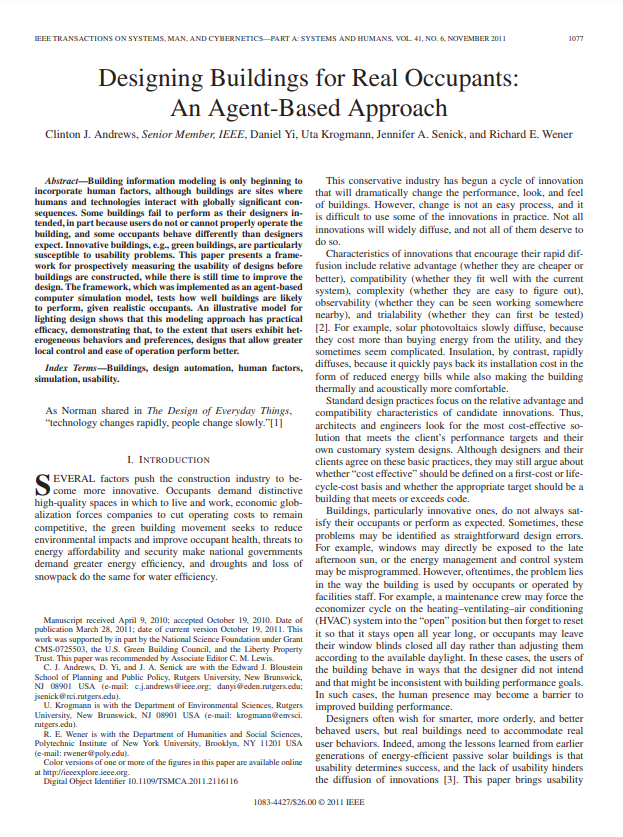Building information modeling is only beginning to incorporate human factors, although buildings are sites where humans and technologies interact with globally significant consequences. Some buildings fail to perform as their designers intended, in part because users do not or cannot properly operate the building, and some occupants behave differently than designers expect. Innovative buildings, e.g., green buildings, are particularly susceptible to usability problems. This paper presents a framework for prospectively measuring the usability of designs before buildings are constructed, while there is still time to improve the design. The framework, which was implemented as an agent-based computer simulation model, tests how well buildings are likely to perform, given realistic occupants. An illustrative model for lighting design shows that this modeling approach has practical efficacy, demonstrating that, to the extent that users exhibit heterogeneous behaviors and preferences, designs that allow greater local control and ease of operation perform better.
Designing buildings for real occupants: An agent-based approach
Citation:
Andrews, C.A., Yi, D., Krogmann, U., Senick, J.A., and Wener, R.E. “Designing buildings for real occupants: An agent-based approach”. IEEE Transactions on Systems, Man, and Cybernetics A: Systems and Humans”, 2011.
